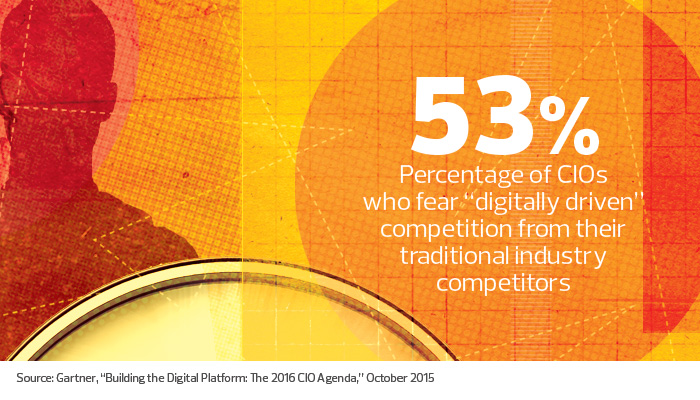Sophisticated App Development Demands Use of Full-Stack Monitoring
In today’s app-driven world, a pilot often uses an app to access the same data as the air traffic control crew. A plant manager in a remote town opens the same app as colleagues at headquarters. Retail customers consult multiple apps before making purchase decisions.
The future belongs to the digital experience and, by 2020, executives expect 41 percent of revenue to be generated by digital business, according to Gartner’s “2016 CIO Agenda.”
Investing in an App Economy
Companies are paying attention and ramping up app development. A survey by the 451 Research firm found that most companies value getting apps to market quickly over reducing costs or increasing revenue. Such speed requires an agile or continuous dev environment. That’s where full-stack monitoring comes in.
Traditionally, IT has been divided into three stacks: applications, infrastructure (such as servers and databases) and networks (to connect everything together).

Full-stack monitoring lets organizations merge people and all systems layers into a single view. It can help a business visualize the big picture, test new apps both pre- and post-deployment, and solve problems anywhere in the system.
As IT vendors jockey to compete in this full-stack environment, app performance management businesses now provide products to monitor the stack. HP and IBM both have made acquisitions that support agile environments, continuous testing and Big Data analytics. Still others are developing tools powered by artificial intelligence.
“In the app economy, user experience is what matters most,” points out Dan Holmes, vice president of product and infrastructure management at CA Technologies. “What links are people following? What’s their level of engagement? You need to know what all three stacks are doing to discover those insights.”
How Will Full-Stack Monitoring Adapt to the Cloud?
Sean Dwyer is vice president of engineering for LeadCrunch.ai, a company that uses AI to analyze its clients’ customer data to help with targeting and marketing. LeadCrunch.ai’s main offering doesn’t require a user-intensive front end, but on the back end, Dwyer’s company uses a couple of solutions to monitor metrics and job queues.

LeadCrunch.ai, like many high-tech companies, hosts all of its applications in the cloud. “It’ll be interesting to see how monitoring solutions adapt to the rise of ‘serverless’ architectures that are now possible via the public cloud,” he says.
Joy McCaffrey, a developer at app company The Difference Engine, says she appreciates the ability to see the whole picture. “Full stack gives you more freedom because you can do it all — when you’re doing the back end and you need to understand the front end, and vice versa.”









